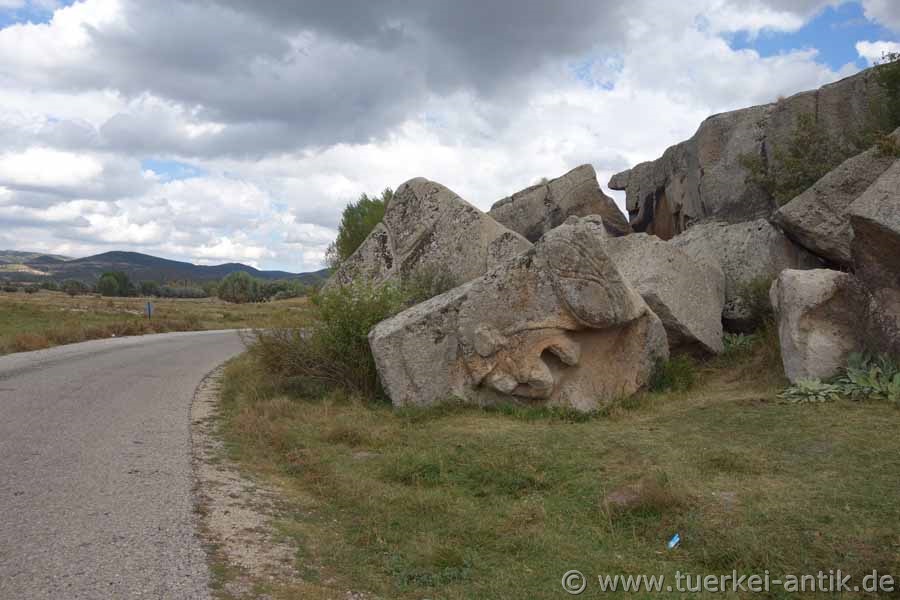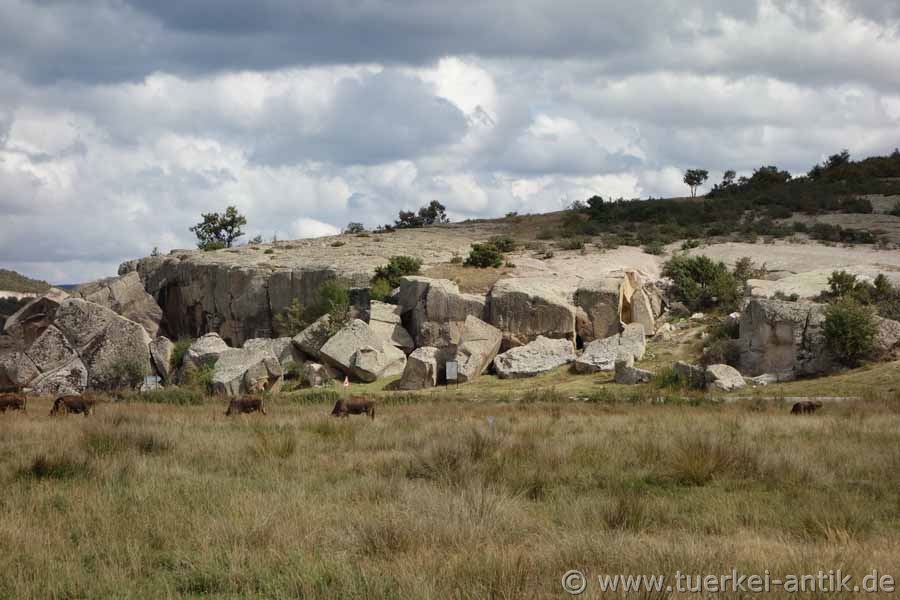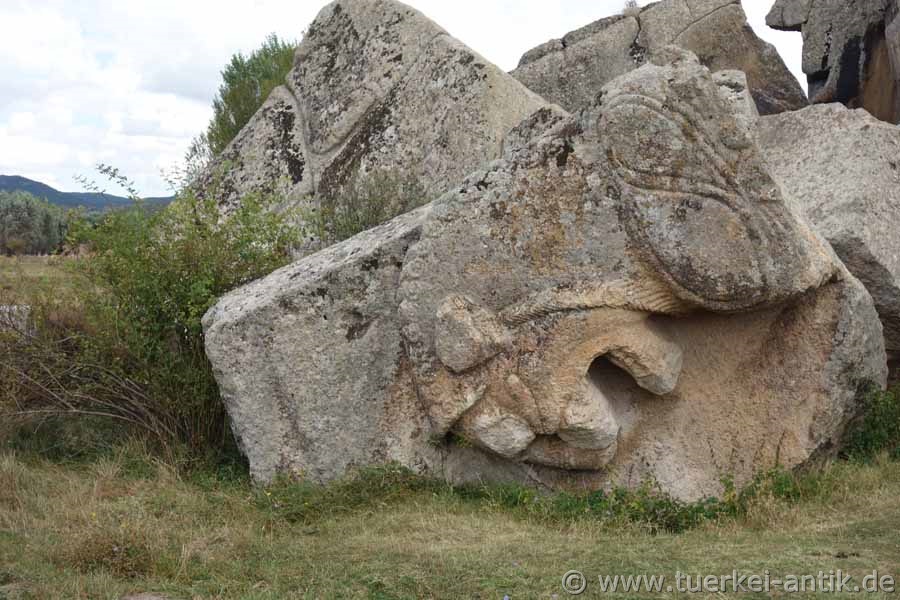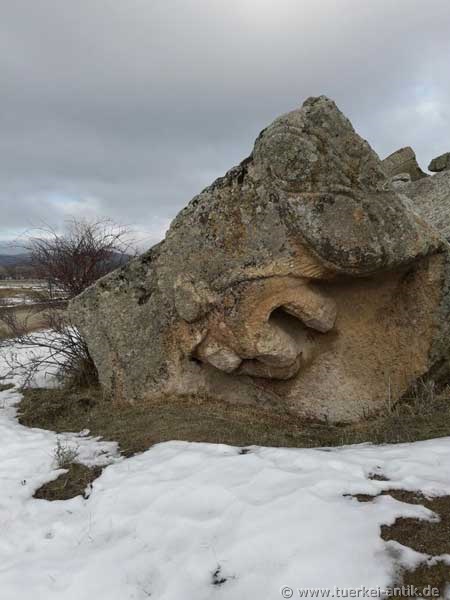 |
| Aslantaş and Yilantaş in Phrygia | |||
|
|
|
||
| Aslantaş | |||
|
Aslantaş (also Arslantaş (Lion's stone) and Yılantaş (Snake stone) are two Phrygian rock chamber graves in the Phrygian valley. |
|||
|
|
|||
|
Arslantaş, the lion's stone |
|||
|
Aslantaş was discovered in 1882 by Scottish archaeologist William Mitchell Ramsay. It's hewn into a boulder ten meters high. Halfway up is the burial chamber, guarded on both sides by two standing lion figures. At about the height of the chamber there are two further, smaller, lying lion figures, which are difficult to recognize because of their poor condition. |
|||
 |
|||
|
|
|||
| Yılantaş, the snake stone | |||
|
A few hundred meters from Aslantaş - around a curve - lies Yılantaş, a collapsed specimen of the same kind. The name comes from the fact that the local farmers considered the fallen lion paws as snake representations. |
|||
 |
|||
|
|
|||
|
The Yılantaş in January |
|||
 |
|||
| Aslantaş and Yilantaş from a distance | |||
| Photos: @chim, Monika P. | |||
| Translation aid: www.DeepL.com/Translator | |||
| Source: Wikipedia and others | |||
|
|
|||




